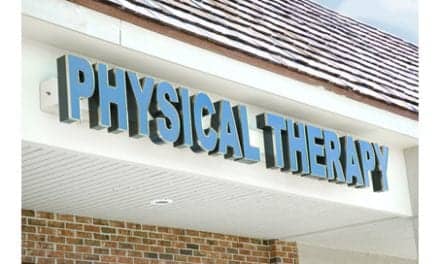In a recent study, researchers have identified 899 regions in the human genome associated with low bone-mineral density, 613 of which have never before been identified.
People deemed to be at high risk—about 2% of those tested—were about 17 times more likely than others to develop osteoporosis and about twice as likely to experience a bone fracture in their lifetimes, according to the Stanford University School of Medicine study.
“There are lots of ways to reduce the risk of a stress fracture, including vitamin D, calcium and weight-bearing exercise,” says Stuart Kim, PhD, an emeritus professor of developmental biology, in a media release from Stanford Medicine. “But currently there is no protocol to predict in one’s 20s or 30s who is likely to be at higher risk, and who should pursue these interventions before any sign of bone weakening. A test like this could be an important clinical tool.”
Kim is the sole author of the study, published recently in PLOS ONE.
Osteoporosis is often diagnosed with a bone-mineral density test that uses X-rays to measure the amount of minerals, such as calcium, in a person’s hip, spine or heel. But bone-mineral density tests are usually only performed on people with a family history of osteoporosis or those who have experienced a recent fracture from a simple fall.
“The most common clinical algorithm used to detect or predict osteoporosis is called FRAX,” Kim says. “But the catch is that the two largest components of the FRAX algorithm are bone-mineral density and prior fracture. So it’s kind of a circular argument.”
In the study, Kim analyzed the genetic data and health information of nearly 400,000 people in the UK Biobank—a vast compendium of de-identified information freely available to public health researchers around the world. For each participant, Kim collected data on bone-mineral density, age, height, weight, and sex, as well that participant’s genome sequence. He then developed a computer algorithm to identify naturally occurring genetic differences among people found with low bone-mineral density.
Using the algorithm, Kim was able to identify 1,362 independent differences, or single-nucleotide polymorphisms, that correlated with low bone-mineral density readings. He then used a machine-learning method called LASSO, developed in 1996 by Stanford professor of biomedical data science and of statistics Robert Tibshirani, PhD, to further hone the data, the release explains.
The resulting algorithm assigned a score to each of the nearly 400,000 participants to indicate their risk of low bone-mineral density; subsequent analyses showed that those in the bottom 2.2% of these scores were 17 times more likely than their peers to have been diagnosed with osteoporosis and nearly twice as likely to have experienced a bone fracture.
Kim is now planning to arrange a clinical trial to investigate whether elite athletes and select members of the military identified by the algorithm as being at high risk for osteoporosis and potential fracture can increase their bone-mineral density with simple preventive measures. He’s also interested in conducting a similar study among younger people with no obvious clinical symptoms of bone weakening, the release continues.
“Fifteen million people in this country have already accessed their genome sequences using direct-to-consumer testing services,” Kim states. “I think this analysis has the potential to become the standard of care in the coming years. It would be a relatively simple measure to identify those who should have their bone-mineral density tested and perhaps take steps at an early age to ensure their future bone health.”
[Source(s) Stanford Medicine, Science Daily]





